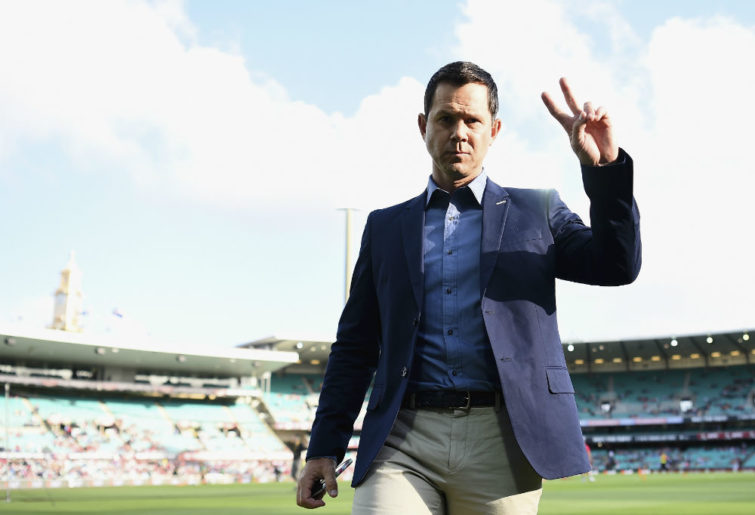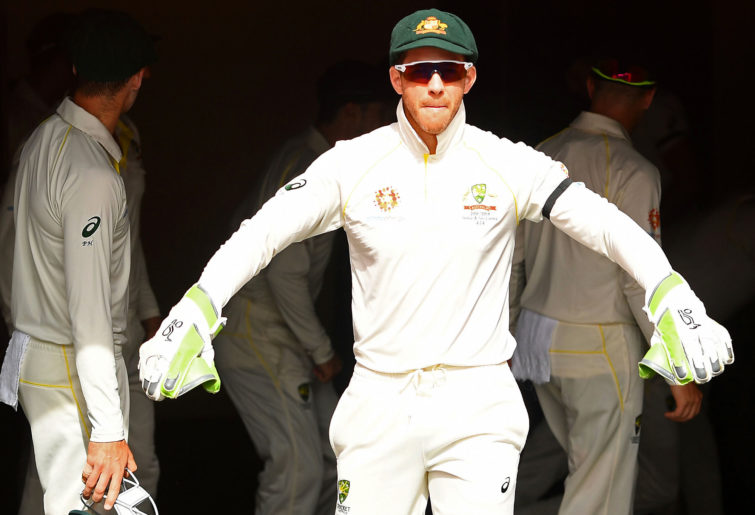After a difficult series with India, a series against Sri Lanka and a coming Ashes series, there is a wealth of articles providing guidance for our troubled and apparently confused selectors.
And I’m not suggesting that they don’t need help, so I’m going to throw my two cents in.
But how to help? Instead of just making specific suggestions, I want to look at the preferred profile of an ultimate 13 and then we can look at who we have to fill those roles. I thank Guest ‘Dart’ for assisting with this idea by providing an interesting description of the skills particular roles require. And there is a reason why this is the ultimate 13 and not just 11.
So what is the make-up of the ultimate squad? First, you need a starting 11 made up of six batters, five bowlers and a keeper. No mistake with my maths – 6 people to carry the batting, 1 to meet wicket-keeping duties and 5 bowlers to get wickets.
And to fit that into 11 is simple, one person does two jobs (and it can be the keeper). And for goodness sake, you should have five bowlers.
The whole premise of only needing 4 bowlers is flawed and based on squads like the West Indies at their peak or Australia when they had Glenn McGrath and Shane Warne, or weak opposition.
It’s a source of personal angst seeing Ashes team suggestions based around six specialist batsmen.
Let me remind you all, winning cricket matches is not based on the number of runs, it is based on getting 20 wickets. Batsmen rarely get bulk wickets, but a tail can add important runs.
500 to 600 runs will win you a test match with the right attack and our recent loss to India was as much to do with bowling failures as batting.
We made enough runs to win the series, but we didn’t take enough wickets. Remember what the Windies would say? Doesn’t matter how many runs you get, we’ll get you all out for less. And Richards or someone was there to take the role of the fifth bowler.
Oh yes, there is always the strategy of making a million runs in the first innings, batting the opposition out of the game and letting scoreboard pressure take wickets for you.
Winning by an innings or so, we did that a lot during the Mark Taylor, Steve Waugh, Ricky Ponting and Michael Clarke years.

(Photo by Ryan Pierse – CA/Cricket Australia/Getty Images)
Tell me, we won by an innings against Sri Lanka in Brisbane and heavily again in Canberra, did you enjoy that game more than the closer battle against India in Perth? Huge defeats in Test cricket are detrimental to the enjoyment of the sport, and personally, I would prefer games where we go around twice scoring around 300 or 350 an innings.
I watched a lot of cricket during our dominant years of the Taylor – Clarke periods and I can assure you, we really didn’t need the six batsmen to win the tests we did.
In fact, I can only think of one test – where Gilchrist and Langer saved our bacon against Pakistan in Hobart – that having the extra batsmen was an obvious winner.
I did see, however, too many games to mention or think of a specific example that we lost or petered out to a mild draw where the extra bowler would have made a definitive difference.
It’s not uncommon for teams to go into tests with only four bowlers and to encounter an injury or one bowler to be out of sorts or way off form and you end up putting the load onto just 3 bowlers and some part-timers.
I also recall a lot of commentary about Shane Warne (and a few others) having an excessive bowling load and adversely affecting career longevity.
We could have used the extra bowler and Adam Gilchrist could have played the all-rounder role without adversely affecting the team’s success. Perhaps Mitchell Starc’s recent results would have been different with another bowler to help carry the load.
To further illustrate my point, several years ago, England toured in Australia and got thoroughly smashed.
In fact, they only won one test. The only game they won was the only game they went into with 5 bowlers – using Phillip De Freitas as an allrounder in the No.6 spot. I am constantly frustrated when we fill a line-up of six batsmen – most of whom don’t outscore their bowling brothers and take no wickets.
Unless the pitch is a minefield you don’t need the sixth batsman. Bowlers can make runs with more consistency than batters take wickets. Our past selection policies have a lot to answer for.
The Bottom line is that a positive and aggressive line up is designed to take 20 wickets and score enough runs to outscore the opposition over two innings. Six batsmen, five bowlers and a keeper, 12 roles covered by 11 people.
But this is a best XIII, so who are the two extras? Well, your ‘11’ should really start as a 12 with 6 bowlers. A balanced attack should have 4 quicks and 2 spinners (1 leggie, 1 offie for variety).
Based on the pre-game assessment of the pitch, the decision is made to go in with one spinner and four four quicks or a two/three mix with the odd man out being 12th man.
Your 13th man is a batter – in the rare case the pitch is an absolute minefield, then you might go in with the extra batsman.
The best ‘pace’ quartet incorporates swing (Terry Alderman and Damien Flemming, for example), seam, line and length (McGrath) and sheer pace (Brett Lee) with both left and right arm bowlers to cover all bases and situations that arise in a game.
You can also look to include a workhorse-type bowler, thus being able to use impact bowlers in short bursts.
Of course – we are talking ideal here and you don’t always have the right people at hand.
The team
The openers
Ideally a left and right combination, one aggressive and one steady. Think Michael Slater and Mark Taylor, and whilst they were like-handed, Matthew Hayden and Justin Langer, David Warner and Chris Rogers, David Boon and Geoff Marsh were all good pairings.
Currently, we have Joe Burns, Marcus Harris, David Warner and possibly Usman Khawaja to consider. Matt Renshaw needs a few runs and maybe Kurtis Patterson would best be used elsewhere. Is there another serious right-hand option around?

(AP Photo/Themba Hadebe, File)
Number three
A specialist position and he needs to be able to be in charge. Confident and not put out if a wicket falls early, can rebuild and be steady if needed.
Also needs to be able to dominate and exert pressure at the right time, increasing scoring rates without necessarily being the team’s best bat.
Think Ricky Ponting and Ian Chappell, while Boon did it well for a while. Currentlym Khawaja has the spot and while I wouldn’t be in a hurry to toss him, regardless of a lean trot, I would give serious consideration to moving Warner into the role.
He has the perfect profile for a number three. I really wouldn’t be considering Marnus Labuschagne in that spot and I think his days are numbered unless he can fill in a spot as the six and be an additional bowler – providing variety to Lyon.
Middle order (Number four and five)
A left-right mix is helpful as it might keep opposition bowlers on their toes.
The best batsman in the team is here and these guys need to contribute the bulk of runs. Think Steve Waugh, Clarke, and Greg Chappell. Our options at the moment are Travis Head, Patterson, the returning Smith and Peter Handscomb in the wings.
Number six
Another specialist role for someone with varied talents, not unlike the first drop.
In this spot, you want a batsman who can be steady and work with the tail if the top five haven’t scored enough, or someone who can accelerate and take advantage of a good beginning if that is the case.
Think Alan Border and Steve Waugh (both of whom could bowl). This can be a tough spot to fill as, if you don’t have a bowler up the order (like Shane Watson), you now need to be thinking of your keeper and bowling group.
If you have a fantastic four bowlers and are putting a batter here, it’s not a bad spot to blood a newbie (Will Pucovski – if he gets himself sorted out).
We really don’t have an ideal person for this spot at the moment, which is a big reason the selectors stuck so long with Mitch Marsh; at his best, he is the ideal number six.
He has the bowling to support the pace bowlers – strong and able to bowl long fast spells accurately – taking wickets along the way. On top of this, he is capable of making a serious contribution with the bat, both batting long and dominating where required.
The obvious issue is, after many opportunities and for whatever reason, he hasn’t delivered and probably isn’t in future contention.
At the moment, our allrounder options are Marcus Stoinis (needs to improve bowling), Glenn Maxwell (good luck), Tim Paine (has a test batting average of 35), Matthew Wade (if Paine is out), Pat Cummins (wouldn’t be my choice) or Labuschagne (if he improves his bowling significantly).

(Photo by Quinn Rooney/Getty Images)
Bowlers who can bat like Michael Neser, Chris Tremain (who has a first class 100), Pattinson et al should look at this hole in the Australian team and make a goal to fill it.
Number seven-eleven
This is the bowling and keeper group.
These are simply ordered according to batting ability. With our bowling group, looking at the desired skill sets above, we currently have a great group, and one that’s hard to improve on.
Mitchell Starc, Josh Hazlewood and Pat Cummins fill the mix of pace, swing and seam, as well as left and right. I would include Jhye Richardson to the group for his swing and pace mix and keep Starc for the left hand pace variation (I don’t see any other quality left hand options) as well as impact value, bowling him for short spells. Others in consideration are Tremain, Peter Siddle, Jackson Bird, Scott Boland and James Pattinson (if fit).
For spinning options to partner Lyon, I see few decent options. Maxwell needs to bring his spinners to test level and Lloyd Pope has a little way to go, though I’d be tempted to take him to England, or at least make him a permanent part of the secpnd XI games.
The answer =is for Steve Smith to secure his return by working on his leg-spinning and take the role of fifth bowler – he won’t have captaincy issues on his mind for a while, if ever.
Ashes 1st test and Tour Squad
Openers: Warner,Harris,Khawaja,Burns
Number three: Khawaja,Warner
Middle order: Smith (also as fifth bowler),Head,Patterson
Number six: Tim Paine (wk)
Bowlers: Starc, Hazlewood, Cummins, Richardson, Lyon (if Smith bowling, 1 is 12th man, Paine plays at seven), Tremain, Siddle, Pope, Wade
Alternatives: Stoinis, Maxwell, Handscomb































































































